This article is the foreword to the new book Ram Swarup and Monotheistic Religions. The book is a collection of Ram Swarup’s articles and reviews. It has just been published and is available from Voice of India, 2/18 Ansari Road, New Delhi 110002.
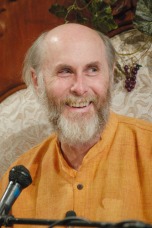 While people in the world generally look at Christianity and Islam according to Christian and Islamic sources, Hinduism remains looked at primarily according to non-Hindu sources which have not changed significantly since the colonial era. While India achieved its freedom from colonial rule, Hinduism remained in the colonial and missionary shadow. It was not freed along with the country, nor did independent India seek to remove the distortions about the majority religion of its peoples, which it continued to allow to be taught in its schools, even though it collects money from Hindu temples taken over by government control.
While people in the world generally look at Christianity and Islam according to Christian and Islamic sources, Hinduism remains looked at primarily according to non-Hindu sources which have not changed significantly since the colonial era. While India achieved its freedom from colonial rule, Hinduism remained in the colonial and missionary shadow. It was not freed along with the country, nor did independent India seek to remove the distortions about the majority religion of its peoples, which it continued to allow to be taught in its schools, even though it collects money from Hindu temples taken over by government control.
The lack of a proper and accessible definition of Hinduism by Hindus themselves has confused other religions and religious scholars. They may think that Hinduism is not a religion at all but a collection of disparate sects and cults with nothing really in common. Some western scholars see Hinduism as a conglomeration of a Vaishnava, Shaiva and other religions with no common teaching behind them. After all, each Hindu sect has an extensive literature about itself but little to say about or to define Hinduism as a whole.
Rather than seeking to reformulate, articulate or defend Hinduism as a whole, Hindu gurus have usually given priority to developing their own particular group and its following, which they then seek to expand in its own right. If you ask western followers of such Indian gurus what religion they follow, they often say that they follow the universal religion of their guru, not that they are Hindus. This may be the case even if the individuals have Hindu names or are swamis rooted in traditional Hindu orders.
 Though he never had an organization, a mission or an ashram and preferred to remain in the background, Ram Swarup nevertheless became one of the dominant figures in modern Hindu thought. He brought an important new point of view into the Hindu renaissance of the past two centuries which can move it in a new positive direction. He not only wrote about Hinduism in the India context but relative to the world as a whole and the major movements and ideologies of our times. He articulated a Hindu point of view in a clear, succinct, cogent and comprehensive manner that makes it compelling for all those who have an open mind and an inner vision.
Though he never had an organization, a mission or an ashram and preferred to remain in the background, Ram Swarup nevertheless became one of the dominant figures in modern Hindu thought. He brought an important new point of view into the Hindu renaissance of the past two centuries which can move it in a new positive direction. He not only wrote about Hinduism in the India context but relative to the world as a whole and the major movements and ideologies of our times. He articulated a Hindu point of view in a clear, succinct, cogent and comprehensive manner that makes it compelling for all those who have an open mind and an inner vision.
Ram Swarup represents the deeper response of the Hindu mind to the critical cultural and religious challenges of today. His work has had a strong impact in India already but its main impact is likely to be for the future, for generations yet to come, as he was a thinker ahead of his time. His impact in the West, though crucial in regard to a number of individual thinkers, is yet to come and may prove more significant. Starting with his main disciple and colleague Sitaram Goel, he has inspired a whole group of thinkers and writers East and West, who are disseminating his ideas and inspirations in various ways. In introducing his writings, I will try to first put the Hindu movement into a broader perspective, reflecting my study of his writings.
 Start of the Hindu Renaissance
Start of the Hindu Renaissance
The nineteenth century witnessed a remarkable and largely unexpected renaissance in Hindu thought, Yoga, Veda and Vedanta that brought back to life and placed in the modern context, the world’s oldest spiritual heritage. An ancient religion that seemed on the verge of extinction was suddenly awake and able to express and assert itself on the stage of the modern world, providing a new view of humanity, culture and religion that could enrich all cultures and countries.
Many western educated Hindus went back to their own traditions and sought to create new movements within Hinduism that reflected a deeper interpretation of their older teachings as well as a new projection of it for the modern age. They sought to restore, reform and universalize Hindu thought. They did not see a need to abandon their traditions for the trends in western thought or religion that they were exposed to — though that had come to dominate their country and its educational institutions — but rather began to recognize in their own traditions something more spiritual and more comprehensive than the products of the western mind, which seemed to them mired in materialism and dogma.
Swami Dayananda of the Arya Samaj in the late nineteenth century brought about an important call to return to the Vedas and provided strong critiques of western religions and philosophies, which had put Hinduism under siege and in defense. He personally debated with western missionaries and educators and was able to show that Hindu thought had a depth that they could not dismiss or even counter when it was clearly articulated.
Then at the turn of the twentieth century, Swami Vivekananda of the Ramakrishna Mission took the message of Hinduism, Yoga and Vedanta to the western world itself, where he was enormously successful, setting up missions in Europe and North America that continue to the present day. Vivekananda also helped revive the ancient traditions in India, setting the stage for the modern Hindu, Yoga-Vedanta movement.
Whereas Swami Dayananda sought to preserve the Vedic message to protect Hindu society from colonial efforts to undermine it, Swami Vivekananda sought to universalize the Yoga-Vedantic message to transform the world. Hindu thought suddenly had not only a renewed value for India but a new message for the entire world. Many other teachers and thinkers of India took up similar views and activities.
 Influence of Indian Independence Movement
Influence of Indian Independence Movement
The late nineteenth century saw the beginning of another major movement in Indian thought and society, the Indian independence movement. It started under the inspiration of the Hindu renaissance through Vivekananda, Dayananda, B. G. Tilak, and Sri Aurobindo and others like them, who looked to Hindu thought through the Vedas, Bhagavad Gita and Vedanta for the foundation of the national struggle.
The Hindu renaissance naturally became strongly aligned with the Indian independence movement as India was a Hindu majority country. However, the Indian independence movement proved over time to be both a boon and a curse to the Hindu renaissance, expanding it in some areas but contracting it in others.
Many Hindus joined the movement and brought Hindu values and practices into it. Mahatma Gandhi, who later came to lead the independence movement, wore the garb of a Hindu sadhu, spoke of the Bhagavad Gita as the greatest book, criticized the missionaries, and called himself a Hindu.
However, a tendency arose to modify Hindu thought for the sake of the independence movement. In particular, the need to bring religious minorities into the movement went against the need of Hinduism to awaken and reclaim its ancient glory. The Hindu reconversion movement that Swami Dayananda set in motion was almost brought to a standstill largely by Hindus themselves. It eventually became politically incorrect from the standpoint of the Indian independence movement for Hindus to defend much less promote their religious identity, so as not to politically alienate the non-Hindus in the country.
Because of the political necessities of the Indian independence movement, the effort in Hindu thought to articulate its own unique identity as well as to expand its reach gradually receded. The Hindu renaissance took a back seat for the Indian independence movement. The fearless and bold self-confidence of Vivekananda, Rama Tirtha and Swami Dayananda in relating the Vedic and Vedantic teachings gave way to an almost timid and apologetic seeking for consensus against the British.
Repercussions of Indian Independence Movement
The muting of the Hindu voice that occurred in the Indian independence movement became hardened in independent India, largely to maintain political support of the same minorities. Politicians of a Hindu background found that they could get more easily elected by playing to minority religious vote banks and appealing to their religious identities and insecurities.
Hindus remained hesitant to project their own tradition in a positive way, much less criticize other religions, in order to avoid offending religious minorities that might vote against them or feel unwanted in the country. In some respects the situation became worse. For example, very few Indian politicians today would make the same statements against the missionaries that Mahatma Gandhi made during his lifetime, or even quote these, so as to maintain their Christian vote banks.
After the achievement of independence, the history, philosophy and global relevance of Hinduism failed to get properly articulated or taught. Vedic and Hindu schools did not come up. Hinduism did not take its place, much less its seniority and depth in the world’s presentation of religious and spiritual traditions. It did not create its own global voice but remained under foreign, alien and often hostile outside interpretations.
While people in the world generally look at Christianity and Islam according to Christian and Islamic sources, Hinduism remains looked at primarily according to non-Hindu sources which have not changed significantly since the colonial era. While India achieved its freedom from colonial rule, Hinduism remained in the colonial and missionary shadow. It was not freed along with the country, nor did independent India seek to remove the distortions about the majority religion of its peoples, which it continued to allow to be taught in its schools, even though it collects money from Hindu temples taken over by government control.
Another negative result of the lack of proper formulation of Hindu thought was that Indians of an intellectual bent went over to other systems, notably Marxism, which had more to offer by way of an intellectual point of view and a future to strive for. People were not given any Hindu identity or sense of worth, so they naturally sought a non-Hindu or anti-Hindu identity. They embraced intellectual critiques of Hinduism and had no Hindu intellectual response to provide any balance.
 The Global Spread of Hindu Thought
The Global Spread of Hindu Thought
Global Hinduism has had a similar result, becoming both a help and a hindrance for the Hindu renaissance. In spreading their message globally, Hindu teachers found it easier to promote their own guru or sect of Hinduism and leave Hinduism itself behind or at home. The perceived ethnicity of Hinduism, its being limited to India and those born as Hindus was one side of the issue. The other side was the difficulty of communicating the Hindu tradition as a whole compared to the ease in promoting one particular guru or lineage.
Vivekananda himself, who was the first real global guru from India, found that the greatest interest in the West was in the figure of the guru-avatar, Yoga practices, meditation and a generalized Vedantic thought, while the missionary inspired fear of Hinduism as polytheistic and superstitious was deeply entrenched.
The result was that Hindu gurus in the West tried to appear as universal figures that accepted all religions and were Hindus only by accident of birth. This may have been necessitated by the anti-Hindu propaganda and even racism that they had to face initially — which was still strong in the West particularly in the early twentieth century — but it also became hardened into a trend of its own.
Rather than seeking to reformulate, articulate or defend Hinduism as a whole, Hindu gurus have usually given priority to developing their own particular group and its following, which they then seek to expand in its own right. If you ask western followers of such Indian gurus what religion they follow, they often say that they follow the universal religion of their guru, not that they are Hindus. This may be the case even if the individuals have Hindu names or are Swamis rooted in traditional Hindu orders.
One could say that Hindus are very universal in their sectarianism. Hindu sects have gone global and universal. Some have formulated themselves as new universal religions, with their guru as an avatar. Others claim to have gone beyond religion to a universal spiritual tradition. Yet few have taken the effort to openly honor the greater Hindu tradition or Sanatana Dharma as the universal tradition it has always formulated itself to be, even though they rely upon the Vedas, Upanishads, Bhagavad Gita, Yoga Sutras and other standard teachings of Sanatana Dharma for their particular approaches. There may have been historical or cultural necessities for this phenomenon but its long term limitations must be recognized.
 The Hindu Diaspora
The Hindu Diaspora
The global spread of Hinduism has a human dimension, with many Hindus migrating to the West over the past several decades and some having arrived during the colonial era itself. What they find is that the people in their new countries regard them as Hindus, even if they would rather define themselves according to a particular Hindu sect or in some way as universal. Such Hindus in the West have found a need to define themselves as Hindus not only for westerners to understand them but for their children to continue their traditions.
However, when they look to define what it means to be a Hindu, they find that the Hindu tradition is amorphous and they often don’t know exactly what it is. They are torn between a vague universalism, on one hand, and an ethnic identity on the other. They find a lack of educational material in Hinduism to direct their children toward in order to resolve this problem. The lack of any real articulation of Hinduism as a whole has left them at a disadvantage, which other groups have been quick to exploit, especially among the Hindu youth that is vulnerable to peer pressure.
Relative to Other Religions
The lack of a proper and accessible definition of Hinduism by Hindus themselves has confused other religions and religious scholars. They may think that Hinduism is not a religion at all but a collection of disparate sects and cults with nothing really in common. Some western scholars see Hinduism as a conglomeration of a Vaishnava, Shaiva and other religions with no common teaching behind them. After all, each Hindu sect has an extensive literature about itself but little to say about or to define Hinduism as a whole.
For many such non-Hindus, the Hindu claim to accept all religions is regarded as a kind of ‘me-too’ following, a currying of favor from a colonized people, not a sign of a mature analysis or critical understanding of disparate religious doctrines. It seldom helps other religions understand Hinduism and its particular teachings. Though Hindus have been the main religious group today to promote a tolerance of all religions, it is curious to note that the other religions of the world do not respect Hinduism in turn. This may be because Hindus in trying to be all things to everyone do not project a self-confidence or self-definition that others can recognize.
While this urge is understandable and important, there needs to be a clear formulation of how to proceed in a way that is credible and expansive. Many Hindus who want to reclaim the different facets of the Hindu tradition that have been taken over by other groups may not understand Hinduism in the broader sense and how to explain it to the world as a whole.
 The Hindu Backlash
The Hindu Backlash
This compromised and co-opted state of Hinduism has naturally had its backlashes, which have similarly had both positive and negative sides as backlashes usually do.
On the positive side, many Hindus are seeking once more to redefine Hinduism as Sanatana Dharma or the universal teaching and the different sampradayas or sects of Hinduism, including the modern universalists, as its branches. While they are recognizing the importance of India as the repository of Santana Dharma, they are also discovering a global Vedic heritage that reaches to every part of the planet.
There are now westerners who are happy to formally become Hindus. Hindu as a religious option is arising all over the world as it is after all the world’s third largest religion! In addition, the idea of the Vedic sciences, which includes Yoga, Vedanta, Vedas and Ayurveda under one umbrella, is gaining credibility. People are beginning to discern the outlines of Sanatana Dharma behind its many facets, though a clear understanding of Hinduism as a whole remains rare.
On a social level in India, there has been an arising of political parties and social movements that address Hindu sentiments to counter the favoritism extended to religious minorities in the country that is unparalleled in the rest of the world. However, owing to a great extent because of this same lack of articulation of Hinduism in the broader sense, they can be unclear as to what they are really promoting as Hinduism or as Hindutva, which has itself become a negative term in the global media. They appear to others as Hindu nationalists, not as universalists portraying Hinduism as relevant to the entire world. They have lacked the intellectual voice to bring out what Hinduism really is and give it a futuristic vision, which has shadowed and limited their efforts.
There is yet another type of Hindu backlash arising among Hindus in the West. Many Hindus are disturbed to find that Hindu teachings through Yoga, Ayurveda and Vedanta have been taken over by various movements in the West without adequate credit given to the original tradition that these come from. Some Hindus now want to take back Yoga, for example, which they find that many people in the West are regarding as a tradition only accidentally or superficially connected to Hinduism.
Crisis in the Hindu Renaissance
The Hindu renaissance for all of its wonderful gains, whether in spreading Hindu teachings, or aiding in India’s independence and resurgence, has suffered from the lack of a clear articulation of Hinduism or Sanatana Dharma as a whole. In spite of the great Hindu renaissance in India and the spread of Hindu gurus and their teachings globally over the last two centuries, there remains a crisis of identity in the Hindu tradition and among Hindus themselves.
Hindus as a whole don’t know who they are, what in particular they follow or why. Some Hindu groups have defined their tradition in such a universal and vague manner that it has lost any structure. They are unable to articulate a cogent Hindu point of view on the pressing issues of our times even where traditional Hindu and Vedic texts have a tremendous amount to offer.
While different Hindu teachings have spread worldwide, an understanding and appreciation for Hinduism as Sanatana Dharma or the universal tradition has not kept pace with this. Meanwhile the different modern Hindu sects that have gone global lack a broader perspective to defend themselves from the challenges of the world around them. Some western Yoga groups – who have avoided any direct association with Hinduism – when attacked as ‘cults’ have been forced to call themselves Hindus in order to gain credibility at a legal level. It remains to be seen how many generations their particular sects or movements will last without the broader Hindu tradition to defend and support it.
We note a kind of opposite type of imbalance in how Hinduism has developed in the India context versus the global context, two extremes that need to be brought back into harmony. In the India context, Hinduism has remained trapped in an Indian identity with political limitations on how that can express itself or what it appears to be. This can make Hinduism appear backward and unprogressive even to Hindus.
In the global context, Hindu teachers have largely abandoned any Hindu identity and gone universal, ignoring or hiding their roots in Sanatana Dharma, even though it is the Hindu based teachings of Yoga, Ayurveda and Vedanta that have given them their appeal. It is the same problem behind both instances: a failure to articulate Hinduism as Sanatana Dharma in a clear, coherent, comprehensive and consistent manner.
We can contrast this with how Buddhism has presented itself. Buddhist teachers in the West have not denied their Buddhist backgrounds and have tried to give their followers some sense of what this is above and beyond the particular Buddhist sect that they may follow. Perhaps this is because Buddhism is stronger in more than one country and not so linked with one country’s affairs. But it is also because Buddhists have been more willing to take up the intellectual challenge and to recognize a common dharma in the process.
 The Place of Ram Swarup
The Place of Ram Swarup
The result of this lack of intellectual articulation and self-defense is that Hinduism all around has remained under attack from conversion seeking religions, political interests, the commercial media, and foreign powers, with little to defend much less promote itself. Hindu society has been misguided, confused and unclear as to how to handle the situation. Even most Hindu gurus have not wanted to address the anti-Hindu propaganda out of fear of exposing themselves to the resultant criticism or the label of being called a Hindu. Hindus have hoped these problems would go away if they ignored them, but have only found that their identity has become increasingly a target of distortion, if not denigration. It is relative to this complex and compromised background that Ram Swarup arose, steadily addressed all the issues and brought about a revolution in Hindu thought which, if followed, can correct this difficult condition.
Ram Swarup provides a compelling intellectual and spiritual defense as well as a universal projection of Hinduism that articulates Hinduism or Sanatana Dharma as a whole, and can help put the Hindu renaissance back on track. He is a unique thinker who has addressed all the main issues of Hindu dharma and has charted a way forward through all potential limitations and distortions. He was willing to stand up and make his voice heard as early as the nineteen fifties, facing the Marxists who then were the darlings of the Indian media, when no individual or group seemed to understand the gravity of the situation or how to deal with it.
Ram Swarup has first of all reclaimed Hinduism as a positive term through his consistent articulation of Hindu thought. Even many Hindus today object to the term Hindu, though they don’t seem to have a better name for their great tradition. Ram Swarup has shown that the term Hindu needs to be honored and redefined as Sanatana Dharma or the universal tradition that has always been its real meaning. Though Hinduism as a term still has many negative connotations, largely of a missionary and Marxist nature, terms like Hindu thought, Hindu mind and Hindu Yoga are coming out in a positive way to a great extent because of his influence.
Ram Swarup developed redefinition of Hinduism that has inspired such an important spiritual movement as the Hinduism Today magazine in the West. Following the inspiration of Ram Swarup, Sivaya Subramuniya Swami of Hinduism Today magazine boldly proclaimed, “Hinduism is unique among the world’s religions. I boldly proclaim it the greatest religion in the world.” The great Swami, with the spiritual confidence of another Vivekananda, goes on to explain all that Hinduism has to offer in terms of mystical teachings and profound Yoga practices that cannot be found actively expressed or represented in any other religion in the world today. He lauds Hinduism for its diversity and abundance of deities, temples, festivals, teachings, gurus, monks and practices. His words are not a sectarian call or a political statement but a sincere appreciation of the greatness of Sanatana Dharma that many people will feel once they understand the overall tradition and its universality that is not limited to a book, savior, prophet, chosen people or dogma.
 Ram Swarup’s Critique of Religion
Ram Swarup’s Critique of Religion
Ram Swarup pioneered a new Hindu examination of other religions, notably Christianity and Islam, that is balanced, clear and rational, based upon higher ideals and insights. He aims towards a universal truth, higher consciousness and yogic values that all religions need to honor. He points out differences between the teachings of Hinduism and Vedanta and those of current Christian and Islamic theology, which inevitably take their followers in different directions. He does much of this by simply contrasting their actual teachings with those of Hinduism, whether in regard to karma and rebirth, higher consciousness, or an understanding of the nature of Atman and Brahman, the higher Self and the Absolute.
If we put the teachings of different religions as their followers commonly know them to be side by side, the distinctions become obvious. All religions are not the same and don’t teach the same thing. We need to be as discriminating about religious and spiritual teachings as we are about food, work, relationship, culture or any other major part of life. Ram Swarup has brought that profound yogic discrimination or viveka back into Hindu thought and into the Hindu examination of religious teachings. He uses yogic psychology to examine the religious experience. In the process he exposes the biases behind conversion based monotheism and shows its idea of deity to be tainted by human prejudices, not a truly spiritual formulation of unity or universality.
His discriminating insight is particularly important in exposing how Christians in India will use Hindu teachings, ideas or images to promote their conversion efforts. Even when liberal Christians in India talk of oneness and Advaita, they will not accept karma and rebirth, much less make any Hindu teacher equal to Christ, or try to stop the conversion of Hindus. Their non-duality, though borrowed from Hindu teachings, is not a unity of truth beyond religious identities but an effort to make Christianity more appealing to the Hindu mind so as to facilitate the conversion process. It is an effort to Christianize Hindu ideas not to take us to a unity beyond all conversion, which is a denial of the sacred nature of the Atman or true Self.
Such a Hindu critique of other religions is necessary and helpful and can serve to balance the criticism of Hindu dharma, most of which is unfounded, that is already out there. It can promote the mystical side of other traditions and help people who want to go beyond the limitations of belief based approaches to an inner experiential yogic spirituality.
Different religions, like different philosophies, will take those who embrace them in specific directions according to their specific prescriptions. We need to be honest with people about that, not sugar coat religious differences in an aim to create social harmony. Social harmony should be based upon free thinking and an acceptance of religious differences — including atheists and agnostics – not an effort to pretend that religious differences do not matter or do not exist.
A mature society can allow religious differences just as it does differences in science, art or culture. A social order that cannot accept religious differences, but must pretend they are not real, must remain limited, artificial and stifling to the spirit. Hinduism is a religion can find unity in diversity, which is a unity of truth beyond the boundaries of all beliefs and organizations. In this way any free thinker can find a place within it. Ram Swarup reveals this pluralistic understanding behind the Hindu sense of unity, which is the real meaning of the harmony of all dharmas.
No one criticizes a Christian or a Muslim for praising their particular religion. It is only the modern Hindu who seems to have lost that self-respect, even though his tradition is far more grandiose and comprehensive. Christians and Muslims are not expected to accommodate Hindu beliefs, whether they live in India or elsewhere in the world, while expressing their views. Yet Hindus are often afraid or perhaps unable to explain what Hinduism is relative to the other religions, which they seldom study or analyze according to the tenets of Hindu thought.
Ram Swarup was a very gentle, kind and soft spoken person, yet he did not compromise the truth or seek favor by trying to please everyone around him. He has shown that Hindus can be tolerant and respectful of others and yet do not have to give up their own critical voice or compromise their own identity in the process. Hindus must learn to hold to the inner truth of their tradition even when relating to people of contrary views that they must seek to counter in order to defend the higher dharma in the global arena.
Perhaps because Ram Swarup was not trying to promote a particular guru or become one himself, he has not fallen into the trap of making his own teachings supreme and distancing himself from the greater Hindu tradition. At the same time, he has always emphasized the flexibility of Hindu thought to provide the vision to discover new solutions to all human problems. He has not simply repeated the old formulas of the past that refer to a time and culture that is no more. He has brought back the Hindu mind and its deeper timeless intelligence, not just promoted old books or old interpretations of them. He has shown how Hindus can reform their own community by a return to the teachings of Sanatana Dharma.
Ram Swarup has provided a new voice to the Hindu mind that brings back its earlier inspiration both for India and for the world as a whole. Yet in the process, he has not merely rubber stamped Hinduism or particular Hindu groups but has recommended both reform and revitalization in reclaiming and expressing the greater Hindu heritage that even many Hindus have forgotten.
 Hinduism’s Forgotten Friends
Hinduism’s Forgotten Friends
Ram Swarup projected a strong Hindu defense, not just of the Hindu tradition but of all related native, indigenous and pagan traditions which have similarly been denigrated by missionary and colonial influences. Most modern Hindu teachers in their rush to gain acceptance by the western monotheistic establishment have tried to make Hinduism appear monotheistic and have avoided any association with non-monotheistic traditions, much less any effort to defend them, though these are their true brothers and sisters facing the same daunting challenges. It is these indigenous and pagan traditions that most resemble Hinduism which itself is the largest pagan religion in the world. They are looking to Hinduism for help and guidance. Ram Swarup has been the main Hindu teacher to hear their call.
Ram Swarup inspired western pagan thinkers and shown that the same denigrations and distortions that are cast on Hinduism are cast on their religions as well (starting with the derogatory terms of pagan, polytheist and animist). He has provided an insight and a self-articulation that they can adapt. He has brought back the role of Hinduism as the defender of all native and consciousness based spiritual traditions that have been similarly attacked by missionary influences and exclusive, belief-oriented dogmas. This new alliance must be pursued and allowed to grow in a natural way. It can change the face of world religion for centuries to come because it can bring humanity back to the Divine presence hidden in nature and her formations of lands, plants, animals, clouds and stars — the sacred world of Brahman that both monotheistic religions and modern political ideologies rarely see or honor.
The Current Volume
This leads us to the current volume of Ram Swarup’s work, which is the largest collection of his writings yet published in a single book. It consists primarily of material not previously available in book form. It contains many short pieces done for various newspapers and magazines, including a number of important book reviews. It spans a period of more than four decades and covers a wide range of topics. It shows Ram Swarup’s critique of Christian and Islamic thought from a Hindu perspective. It shows his critique of Hinduism as well and how it can be brought back in harmony with its deeper aspirations.
The book is roughly divided into sections relative to Hinduism, Christianity and Islam but covers many topics in regard to each. The diversity of articles shows the breadth of his understanding of a variety of fields of thought spiritual, historical and social. Ram Swarup’s comments are of a civilizational nature, projecting the view of the Hindu mind in dealing with the issues facing humanity today. Through this volume we get a good view of all the facets of his thought and how he could shine a dharmic light on almost any issue.
 Conclusion
Conclusion
The coming decades are bound to bring critical challenges for the world and for India. The powers of materialism, consumerism and terrorism seem stronger than ever. In this context the message of Ram Swarup and the relevance of Hindu thought will become more crucial.
It is important for the Hindu movement to move forward and redefine itself based upon the many-sidedness of its vision. This involves taking a global approach, presenting Sanatana Dharma in the context of the greater Vedic and yogic sciences and culture. The connection of Hinduism with Indian politics that dominated both the independence movement and the post-independence era in both positive and negative ways needs to be put in a broader perspective, which is a greater need to promote Hinduism as Sanatana Dharma for the world overall.
While India will likely play a central role in that projection of the universal Dharma, the effort cannot be limited to the issues of India. At the same time, while Hindu Dharma has a universal vision, this cannot be owned or limited by any sect, teacher or person who uses, adapts or claims any of its teachings. It is Hinduism that is the universal tradition, not any of its ancient or modern offshoots that are but its expressions.
A true Hindu or Sanatana Dharma follower will always take a global view but adapted locally, wherever he or she may live. India is important for its having preserved the global Hindu heritage, not simply for what may occur outwardly in the country. The current Hindu movement in India tends to lose that global perspective and can appear narrow. Hindu teachings like Yoga outside of India are largely in denial of their common Hindu or Sanatana Dharma connections. However useful these approaches may have been at one time, they need to be adjusted today.
The universality that has been applied to various Hindu gurus and sects needs to be applied to and credited to Hinduism as a whole. There need to be a new examination of what Hinduism has been traditionally and what its relevance can be for the future, not by outside scholars but by Hindus themselves. We need new books on Hinduism, its teachings and its history, as well as new Hindu schools to promote Sanatana Dharma and its various branches, arts and sciences. Hindus cannot rely upon the non-Hindu world to do this. They must take the lead and bring the Hindu renaissance back to the forefront. The writings of Ram Swarup can provide the cornerstone for this effort. These should be available in every Hindu temple, ashram, school or institution, particularly where English is the dominant medium of expression.
Ram Swarup is a thinker than can help the Hindu movement go forward both with respect to India and the needs of the entire planet. This particular volume is an excellent place to begin the journey. We are all bound by a common Dharma that cannot be denied. It is time for that Sanatana Dharma to arise once more, not only in the Himalayas but on every mountain top!
Filed under: india | Tagged: bible, christianity, culture, hindu, hinduism, hindutva, history, indian history, interfaith dialogue, islam, judaism, koran, media, missionary activity, mohammad, mohammed, monotheism, om, psychological warfare, ram swarup, religion, religious identity, secularism, secularism-nehruism, voice of india |


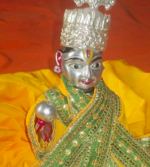






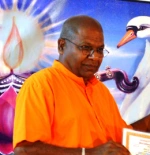

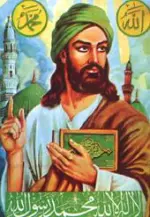
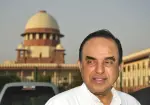



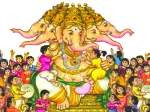



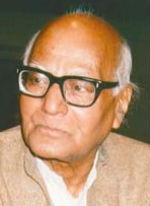

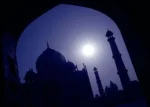




Great article. I’am a proud Hindu with a website revolving around Hinduism which your readers might find useful – https://www.durganavratri.in/
LikeLike
My contribution about David Frawley and other western experts. Best regards.
Yoga : Main contemporary western experts
Professor James Mallinson (England)
James Mallinson’s interest in yoga grew out of a fascination for India and Indian asceticism – he spent several years living with Indian ascetics and yogis, in particular Rāmānandī Tyāgīs. His MA thesis, part of a major in ethnography, was on Indian asceticism. He became dissatisfied, however, with (to quote Sheldon Pollock) the “hypertrophy of method” that afflicts much of the humanities, and anthropology in particular, so sought to ground his future research in philology. The one aspect of ascetic practice that is well represented in Sanskrit texts is yoga, so for his doctoral thesis he chose to edit an early text on haṭhayoga, the Khecarīvidyā, which teaches in detailkhecarīmudrā, one of traditional haṭhayoga’s most important practices, and he used fieldwork among traditional yogis in India to shed light on the text’s teachings (but not so much light that he had to justify his methods!).
As he worked on his thesis he became more and more unsure that the received wisdom on the origins of haṭhayoga (whose practices form the basis of much of modern yoga) was correct, in particular its blanket attribution to the Nāth sect, based as that wisdom was on a very small selection of the available texts and modern oral history (which is rarely a reliable source in India). But it was clear that to put his work in the broader context was going to be impossible while working on his thesis. When he was revising it for publication a few years after completing it, he was asked to contribute to a volume on the Nāths and their literature. He agreed and decided to concentrate on the corpus of texts of haṭhayoga. It soon became apparent that this was going to be too big a task for a single chapter of a book and he apologised to the volume’s editor but continued with his research. Four years on he has identified a corpus of eight works that teach early haṭhayoga and about a dozen more that contribute to its classical formulation in the Haṭhapradīpikā. With this philological basis established it has been possible at last to put all ofhaṭhayoga’s aspects into context, which is what he is doing in the monograph on which he is currently working, Yoga and Yogis: The Texts, Techniques and Practitioners of Early Haṭhayoga, which he hopes will be published in 2012. Many of the conclusions that can be drawn from the corpus and the other sources he uses (from Mughal miniatures to his fieldwork amongst traditional yogis) overturn what was previously thought about yoga’s formative period. Although he has decided to present the bulk of the findings in a single monograph (because its parts are all so interdependent), in the course of working on it he has written various spin-off articles and reviews on specific aspects of haṭhayoga.
Dr. James Mallinson is vegetarian.
Website: http://www.khecari.com
STUDIES
1988-1991 BA Sanskrit (Oxford).
1992-1993 MA Area Studies (South Asia) SOAS
1995-2002 DPhil (Oxford), supervised by Professor Alexis Sanderson, The Khecarīvidyā of Adinatha: A Critical Edition and Annotated Translation.2002-2008 translator for the Clay Sanskrit Library
2009-2010 Temporary position as Lecturer in Sanskrit at SOAS
2010 – Fellow of the Institute of Classical Studies Lavasa
BOOKS
2009 The Ocean of the Rivers of Story by Somadeva. 2 ~ Vol. New York University Press.
2007 The Ocean of the Rivers of Story by Somadeva. Vol ~ 1. New York University Press.
The Shiva Samhita 2007. New York: YogaVidya.com.
2007 The Khecarīvidyā of Adinatha. A critical edition and annotated translation of an early text of haṭhayoga. London: Routledge. (In 2010 the book was reprinted in paperback by Routledge and an Indian hardback edition was published by Indica Books.)
Messenger by Kalidasa Poems 2006, Rupa & Dhoyi Gosvamin. New York University Press.
2005 The Emperor of the Sorcerers by Budhasvamin. 2 ~ Vol. New York University Press.
2005 The Emperor of the Sorcerers by Budhasvamin. Vol ~ 1. New York University Press.
2004 The Gheranda Samhita. New York: YogaVidya.com.
Articles
Forthcoming (2011) Entry on “Hatha Yoga” in the Brill Encyclopedia of Hinduism Vol ~ 3.
Forthcoming (2011) Entry on “The Nath Sampradaya” in the Brill Encyclopedia of Hinduism Vol ~ 3.
Forthcoming (2011) “The yogis’ Latest Trick”. Review article in Tantric Studies (University of Hamburg).
Forthcoming (2011) Entry on “The Kumbh Mela” in Keywords in Modern Indian Studies to be published by Oxford University Press (Delhi) in the series “SOAS Studies on South Asia”.
Forthcoming (2011) “Siddhi and Mahāsiddhi in Early Haṭhayoga” in Yoga Powers, ed. Knut Jacobsen. Brill.
Forthcoming (2011) “The Original Gorakṣaśataka,” in Yoga in Practice, ed. David Gordon White. Princeton University Press.
2005 “Ramanandi tyagis and Haṭhayoga,” pp. 107-121 in the Journal of Vaishnava Studies Vol ~ 14 ~ 1/Fall No. 2005. Reprinted inNamarupa magazine (2006). Reproduced with permission of the Journal of Vaishnava Studies
2007 Channel 4 documentary, The Beginner’s Guide to Yoga, que Also was broadcast on the Discovery Channel. I devised the Programme, co-presented it and was associate producer.
CONTACT:
admin@modernyogaresearch.org
https://www.khecari.com
————————————————————–
Professor Christian Rodriguez (Argentina)
Professor Christian Rodriguez or Yogacharya Yogi Om, is a teacher, writer and international Yoga speaker born in Buenos Aires in 1975, has written twelve books, all relating to Yoga and the knowledge contained in that discipline. These books have been published in audiobook format, according to the author, for ecological reasons.
HISTORY
Professor Christian Rodriguez, Yogacharya Yogi Om appointed under the auspices of the Hindu Yogi Ramananda Surya Prarya Yogi is the only follower, outside India,
the lineage of yoga created 5,000 years ago in the foothills of the Himalayas in northern India.
His Guru, RamanandaSuryaPraryaYogi, proceeded to bequeath the ancient knowledge, which have been transmitted from master to disciple, in the secret oral tradition, and under the gurukula system, since the creation of Yoga 5000 years ago.
He has given numerous lectures in his country (Argentina) and South American countries such as Chile, Peru, Bolivia, Paraguay and Ecuador.
Recently approved by his guru, he is revealing ancient knowledge pertaining to yoga, which had never been released outside of the lineage. Such knowledge disclosed, have caused a real sensation and impact in India and among the followers of yoga and experts from around the world, among which are also Indologists, archaeologists and ancient india historians, who have also been interested in their disclosures.
His disclosures have also been of great interest to scholars and researchers of the ancient text Samudrika Shastra, they consider that the recently disclosed information could be the basis on which the text is drawn above. The Samudrika Shastra deals mainly cast by the morphological characteristics of the hands, face and external skull shape and the psychological implications. Other stakeholders in its disclosures have been the Vastu experts, which have found new information on that discipline.
Absolute admirer of Mahatma Gandhi, Professor Christian Rodriguez is a strict vegetarian for spiritual, moral and ethical grounds by definition. Also practiced animal protectionism, making work with their students and followers rescuing abandoned public roads (karma yoga), which animals receive appropriate care in order to be granted for adoption. Is also an active environmentalist, however, is proclaimed in favor of ecology on a personal level, without resorting to clusters. Throughout the years he has collected thousands of discarded (karma yoga). He estimated result of having these batteries discarded with ordinary waste have contaminated the amount of one billion liters of water.
MEDIA APPEARANCES
Respecting his Guru tradition, has always adopted a low profile and an uncompromising stance on appearances on radio, television, print and other media.
BIBLIOGRAPHY
His books have been published, “for ecological reasons” according to its author, in audiobook format. The books have been published in Spanish (aimed at Spanish-speaking countries), in english language for English speakers, and in Hindi and Gujarati language aimed at readers in the Republic of India.
Books can only be purchased directly through reviewers teacher, not being available in stores or Internet sites selling. Among the famous people who have purchased his works include the British singer and yoga practitioner Sting.
Some of his books:
* Dhyana
* Jyoti
* Nada
* Pranakar Prabhava
Audiobooks available
15 TITLES PUBLISHED
UNREVEALED KNOWLEDGE
Synopsis
PROFESSOR CHRISTIAN RODRIGUEZ (YOGACHARYA YOGUI OM) IS THE ONLY FOLLOWER, OUTSIDE INDIA, YOGA LINEAGE CREATED 5.000 YEARS AGO IN THE FOOTHILLS OF THE HIMALAYA, IN NORTHERN INDIA.
YOUR GURU, RAMANANDA SURYA PRARYA YOGI PROCEEDED TO BEQUEATH BY ANCESTRAL KNOWLEDGE, WHICH HAVE BEEN FORWARDED FROM MASTER TO DISCIPLE, IN ORAL SECRET TRADITION, AND UNDER THE SYSTEM GURUKULA, SINCE THE CREATION OF YOGA, 5,000 YEARS AGO.
PROFESSOR CHRISTIAN RODRIGUEZ, NEWLY AUTHORIZED BY YOUR GURU, SET TO RELEASE FIRST TIME IN THE HISTORY OF KNOWLEDGE YOGIC 5,000 YEARS OLD, WHICH HAVE ONLY BEEN DISCLOSED SECRETLY FORWARDED TEACHER AND A DISCIPLE, BUT NEVER DISCLOSED TO ANYONE OUTSIDE THE ANCIENT LINEAGE.
IN INDIA, OVER 5,000 YEARS AGO, THE ANCIENT YOGIS PROCEEDED TO CREATE AND RAJA YOGA HATHA BUILD. THESE ARE TRANSMITTED KNOWLEDGE IN A STATEMENT IN THE ORAL TRADITION UNDER GURUKULA SYSTEM IN WHICH THE STUDENT LIVES WITH HIS GURU UNTIL THE END OF THE LEARNING.
THE AUTHOR, WHO PURCHASED SUCH KNOWLEDGE THROUGH ANCIENT YOGIC SECRET TRADITION, PROCEED TO FIRST DISCLOSE.
AN HISTORIC BOOK, RECORD, A REAL DOCUMENT, WHICH RESULTS MUST, WHETHER DISCLOSURE, FINDINGS, AND CONSULTATION IMPROVEMENT.
AUDIOBOOKS AVAILABLE
15 TITLES PUBLISHED
REQUESTS TO E – MAIL:
profesorchristianrodriguez@hotmail.com
CONTACT
http://www.youtube/user/profesorrodriguez
http://www.profesorchristianrodriguez.wordpress.com
http://www.profesorchristianrodriguez.blogspot.com.ar
http://www.facebook.com/people/Yoga-Audiolibro/100007417639388
profesorchristianrodriguez@hotmail.com
————————————————————–
Professor David Frawley (USA)
Vedacharya David Frawley (Pandit Vamadeva Shastri) is a western born teacher in the Vedic tradition. In India, Vamadeva is recognized as a Vedacharya (Vedic teacher), and includes in his scope of studies Ayurveda, Yoga, Vedanta and Vedic astrology, as well as the ancient Vedic texts.
In India, Vamadeva’s translations and interpretations of the ancient Vedic teachings have been acclaimed in both spiritual and scholarly circles. He has worked extensively teaching, writing, lecturing, conducting research and helping establish schools and associations in related Vedic fields over the last more than three decades.
Vamadeva sees his role as a “Vedic educator” helping to revive Vedic knowledge in an interdisciplinary approach for the planetary age. He regards himself as a translator to help empower people to use Vedic systems to enhance their lives and aid in their greater Self-realization.
Vamadeva has worked in several different healing and scholarly fields, with some degree of specialization over certain periods of time. Yet he has endeavored to approach each with a degree of specificity, providing both the background philosophy and practical teachings.
Phillip Goldberg in his popular book American Veda (page 223) recognizes Vamadeva (David Frawley) as one of the main “acharya”s of Vedanta-Yoga in the West today, as well as noting his influence in India as a Vedacharya. Note various comments about his work below.
“Those who know (vidvaamsah) will confirm that the works of Shri Vamadeva Shastri are distinguished by their authenticity. This is so because they are based on (1) his personal quest and experience (2) deep dwelling into the texts and (3) oral learning received from many authentic teachers who are experts in their areas of knowledge. Shri Vamadeva Shastri (Acharya David Frawley) has done this great service to many that he has offered access into knowledge that was often hitherto inaccessible to an average western seeker.”
Swami Veda Bharati, Swami Rama Sadhaka Grama, Rishikesh
“David Frawley is one of the most important scholars of Ayurveda and Vedic Science today. I have great respect and admiration for his knowledge and the way he has expounded the ancient wisdom of the Vedas.”
Deepak Chopra
“Frawley is an Indian in an American body. The ease with which he enters into the spiritual of the Indian tradition and renders its deeper concepts in terms of modern thought shows an unusual familiarity with this ancient wisdom.”
M.P. Pandit, Secretary of Sri Aurobindo Ashram
“Certainly America’s most singular practicing Hindu.”
Ashok Malik, India Today
“David Frawley is a formidable scholar of Vedanta and easily the best known Western Acharya of the Vedic wisdom.”
Ashish Sharma, Indian Express, the Express Magazine
Vamadeva received a Pandit award as part of a special Brahmacharya Vishvanathji yearly award in Mumbai in 1994. His role as a pandit and Vedic teacher (Vedacharya) has been honored by many groups in India, where he has frequently lectured and taught. These include Swaminarayan (BAPS), Arsha Vidya Gurukulam (Swami Dayananda), and the Chinmaya Mission (Swami Mitrananda). Such a traditional title as a Pandit and Vedacharya implies having written and taught on the four Vedas and Upanishads, which Vamadeva has done in his many Vedic books that include many original translations from the Sanskrit, particularly from the most ancient Rigveda itself, over the last thirty five years.
Acharya Frawley’s work in India was honored in the book The Mind of the Guru, Conversations with Spiritual Masters (Viking, India, 2003) by Rajiv Mehrotra of the Dalai Lama Foundation, Delhi, India, which featured twenty modern teachers, mainly from India, with a foreword by the Dalai Lama.
In India in 2012, Vamadeva Shastri was made one of the patrons of the Dharma-Dhamma conference hosted by the government of Madhya Pradesh for the starting of a new Sanchi University of Buddhist and Indic Studies at Sanchi/Bhopal. He was one of the two speakers for the closing plenary session. He has been asked to be a visiting professor to Sanchi university for its department of Vedic studies and was made a patron for the university’s second international conference in March 2014. He has been asked to conduct one of the university’s first six courses.
Revising Ancient History: Sanatana Dharma
After seeing how the spiritual meaning of the Vedas had been misinterpreted by modern scholars, Vamadeva could easily see how the historical side of the Vedas had similarly been distorted. This led him to a revision of ancient history. His work revising the history of ancient India has brought him into contact with major archeologists and historians. He has has many published books on the Vedas and Ancient India. Note his picture with Pramukh Swami of the Swaminarayan order. His Hidden Horizons: Unearthing Ten Thousand Years of Indian Culture (2007) is a special publication of the Swaminarayan Order (BAPS).
His book on ancient India, Gods, Sages and Kings (1991) was one of the first to propose a new model of history for ancient India. A shorter version of this material Myth of the Aryan Invasion (Voice of India 1994, 2001) has been a popular book on the subject.
Along with Georg Feuerstein and Subhash Kak, he wrote In Search of the Cradle of Civilization (1995) and along with N.S. Rajaram, Vedic Aryans and the Origins of Civilization (1994). His Rig Veda and the History of India (2001) takes this work further, setting forth a reconstruction of the history of ancient India in a Vedic light. Quotes from Frawley’s books on ancient India and an interview with him were featured in Grahman Hancock’s Underworld, Flooded Kingdoms of the Ice Age book and television series.
Vamadeva has written several books on contemporary issues in India, particularly the challenges to dharmic and yogic culture posed by modern civilization. He views Hinduism in the light of its origins as ‘Sanatana Dharma’, the Universal or Eternal Tradition that is relevant to all human beings.
His books on Sanatana Dharma began with From the River of Heaven: Hindu and Vedic Knowledge for the Modern Age (1991). Additional titles addressing more contemporary issues published through Voice of India in Delhi include Arise Arjuna (1995),Awaken Bharata (1998), and How I Became a Hindu: My Discovery of Vedic Dharma (2000), countering common stereotypes. His bookHinduism: the Eternal Tradition (1995) has been used by ashrams and temples. His Universal Hinduism: Towards a New Vision of Sanatana Dharma (2010) shows its global relevance.
Acharya Frawley’s main teacher of Hindu Dharma was Ram Swarup of Delhi (1921-1998), photo to the upper left, whom Hinduism Today called the most important modern writer on Hinduism, with whom he was associated with from 1992. Ram Swarup wrote the foreword to Vamadeva’s Awaken Bharata. Vamadeva wrote the forewords for Ram Swarup’s collected works, including, On Hinduism; Meditations, Gods, Yogas; and the Word as Revelation: Names of Gods, and other volumes of his collected works.
Touring and Speaking
Over the past thirty years, Vamadeva has lectured in various locations throughout India. Places include Ayurvedic schools, Vedic Astrology schools, Yoga ashrams, universities, Hindu associations, Vedantic associations, and Yoga schools. He has written many articles for various India based newspapers, magazines and journals. He has also traveled and taught in Europe, South America, and throughout North America, relative to a similar range of organizations and institutions. Besides books, he has written numerous articles for magazines, journals, newspapers and the internet in North America and Europe. David Frawley is vegetarian.
CONTACT
vedicinst@aol.com
http://www.vedanet.com
————————————————————-
Professor Ramiro Calle (Spain)
Professor Ramiro Calle is a pioneer in teaching yoga in Spain, discipline taught for more than 30 years ago in the center of Yoga and Orientalism “Shadak”.
It is the most important Orientalist writer of this country and one of the most important in Europe. Author of several works, has extensively studied the therapeutic effects of Eastern psychologies and meditation contributions to psychoanalysis, psychotherapy and neuroscience.
He was the first to promote medical research on Yoga therapy in Spain, in collaboration with leading physicians and specialists.
Ramiro Calle is Vegetarian, and for 40 years tirelessly explored, recovered and applied the methods of peace and balance, synthesizing knowledge of Eastern and Western psychologies.
Director since 1971 Yoga Center “Shadak”, the largest yoga center in our country, directly taught yoga, relaxation and meditation techniques over three hundred thousand people, helping them to prevent and combat psychosomatic problems .
His books Orientalism and self-help have been read by millions of people, mostly Hispanic.
His frequent trips to Eastern countries (more than 50 in India), have allowed him to interview the relevant specialists, teachers and Orientalists, including all those interviews and teachings in his books and papers.
He has participated in numerous radio and television which has spread yoga techniques at national and international level.
LITERARY WORK AND PUBLISHED WORKS
Write, among others, two of the strongest publishing groups: PLANET and ANAYA.
For more than 200 published works and his continuous appearances on radio and television, is well known throughout Latin America.
His latest video-relaxation book has sold more than 60,000 copies, and some of his most important works have even surpassed that figure. Many of his works are frequently reprinted.
BOOKS
You can buy all the works of Ramiro Street in
http://www.elcorteingles.es
His works cover different topics:
Yoga: “The wisdom of the great yogis” – Oniro, “Yoga for Healthy Life” – Today’s; “The Book of relaxation, breathing and stretching” – Alliance, etc …
Self-help: “Given the Anxiety” – Uranus; “Affective Therapy” – Today’s “Emotional Therapy” – Today’s “Practical Guide to Yoga Therapy” – Index, “Restoring the mind” – Uranus, etc …
Orientalism: “East to West Mystic” – Edaf, “Dictionary of Orientalism” – Edaf,.. etc …
Travel Guides: “Journey to India” – Jaguar; “North India”, “South India”, “Nepal”, “Sri Lanka”, “Southeast Asia” – Laertes; etc …
Novel: “The Fakir” – Martinez Roca, “The Dervish” – Martinez Roca; “Govinda” – Jaguar.
Biography: “Buddha, the Prince of Light” – Booket, “Ramana Maharshi, the perfect master” – Cedel; etc …
He has directed the following collections: “Techniques for the knowledge of self and others”, “Nirvana”, “Oriental Library Authors”; etc.
He currently manages the collection “Light of the East” Publisher Edaf, “Learning to Live” and “lamp Wisdom” of the Jaguar publisher.
TEACHING EXPERIENCE
30 years Director of the Center for Yoga “Shadak” does, teaches physical yoga (Hatha Yoga) and mental yoga techniques and meditation (Radja Yoga) numerous people.
Yoga teacher at the Autonomous University of Madrid and Senior Classrooms (Ministry of Culture).
Extensive experience in the application of methods of relaxation and meditation for people with stress, anxiety, depression and addictions.
He has applied the techniques of calming even the seriously ill.
It is recognized in many varied sectors of the population as a great expert on psychosomatic health and psychic balance.
It has a strong reputation among countless doctors, psychoanalysts and psychologists.
Among his students are people from all walks of life, from housewives to artists, business leaders and politicians.
Lecturer prestige has also directed numerous courses throughout the country (eg, “Yoga and Psychoanalysis” at the Center for the Study and Application of Psychoanalysis).
With great convening power, in their lectures and courses has come to bring together more than 1,300 people.
ORIENTALIST
He has made over 60 trips Asian countries, visiting India in more than 50 occasions. He has been invited 5 times by the Government of India, in gratitude for their continuing research and promotion of yoga and Indian culture.
Author of many books, guides and articles on Orientalism, also has 24 cassettes, videos and CD-rom.
He has worked in the Spanish edition of many books of the most important orientalists, teachers and scholars.
CONTACT
http://www.ramirocalle.com/
info@ramirocalle.com
——————————————————————————————————————–
LikeLike
Excellent article. Temples are opening up all over in the western world. I think the temple authorities have to concentrate on the self esteem issues more than the rituals and bhajans.
LikeLike
It is excellent! A must-read for every human being, especially Hindus, so that they develop self-esteem and take pride in their unique culture and great heritage.
Vijayalakshmi
23/2/10
LikeLike